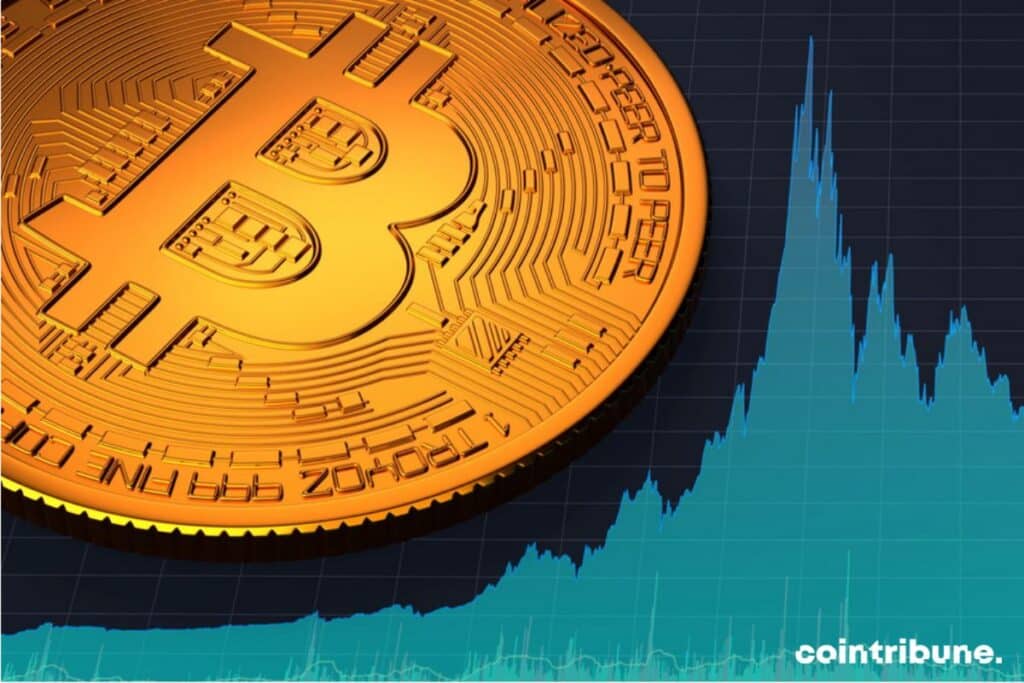Bitcoiners hoard their BTC ahead of the Halving
Never before have so many bitcoins stayed with the same owners for such a long time. Everyone is eagerly awaiting the halving.

HODL!
Glassnode reported last week that 68% of BTC has not changed ownership in at least a year. The figure is 55% for two years and 40% for three years.
The cohort of maximalists continues to grow. And how could it be otherwise when we see the state of debt, bank failures across the Atlantic, the war in Ukraine, and the apparent peak in oil production reached in November 2019.
Tension is palpable. Despite prosperous years, it’s not “the end of history.” The monstrous inflation of recent years is here to remind us not to rest on our laurels.
The trend of conserving bitcoins contrasts with the long-term evolution of US multinational stocks. Coindesk writes that the US stock market is a market where investors no longer hold positions as long as before.
Geopolitical upheavals, China’s economic power, and the energy transition are reshuffling the cards. It’s hard to say which multinationals will come out on top in this pivotal era.
The biggest pitfall (in the humble opinion of your servant) is the peak oil. Nearly 95% of global transportation relies on oil (including one-third for food transport…).
The electric car is not a viable alternative. It depends on infrastructure and parts that rely on oil (roads, tires, plastic, ore extraction, etc.). No road transport system can sustain itself without a constant supply of oil.
The energy descent imposed by the scarcity of oil will inevitably weigh down global productivity. Inflation will necessarily follow, and Bitcoin offers a fair escape from it.
Halving
Every four years, the number of BTC created to reward miners is halved. Bitcoin is designed in such a way that its monetary supply will never exceed 21 million units.
This limit is made possible by the decentralization of Bitcoin and guaranteed by the natural incentive not to change the protocol. Indeed, the masses of Bitcoiners guarding the nodes will always be motivated not to devalue their asset.
That’s why Bitcoin is the best store of value in history. In contrast, the higher the price of gold goes, the more it will be extracted from the ground.
After the next halving (in less than a year), Bitcoin’s “Stock-to-Flow Ratio” will be higher than that of gold for the first time.
This ratio is obtained by dividing the existing amount of gold (187,000 tonnes) by the amount of gold produced each year (3,000 tonnes).
187,000 / 3,000 = 62
In other words, it takes 62 years to produce the total amount of gold already in existence. The higher the ratio, the rarer the studied entity.
This ratio is currently 59 for Bitcoin but will skyrocket to 120 after the next halving. The barbaric relic will then be definitively out of competition.
Here’s the impact of the last halvings on the value of Bitcoin:
- 2016 Halving: $661
One year later: $2,550 (x3.8)
- 2020 Halving: $8,800
A year later: $57,000 (x6.4)
- 2024 Halving?…
One year later?
It’s not surprising that everyone is holding onto their bitcoins these days. The dynamics of supply and demand will radically change in a year. And so will the value of Bitcoin.
Maximize your Cointribune experience with our "Read to Earn" program! For every article you read, earn points and access exclusive rewards. Sign up now and start earning benefits.
Bitcoin, geopolitical, economic and energy journalist.
The views, thoughts, and opinions expressed in this article belong solely to the author, and should not be taken as investment advice. Do your own research before taking any investment decisions.